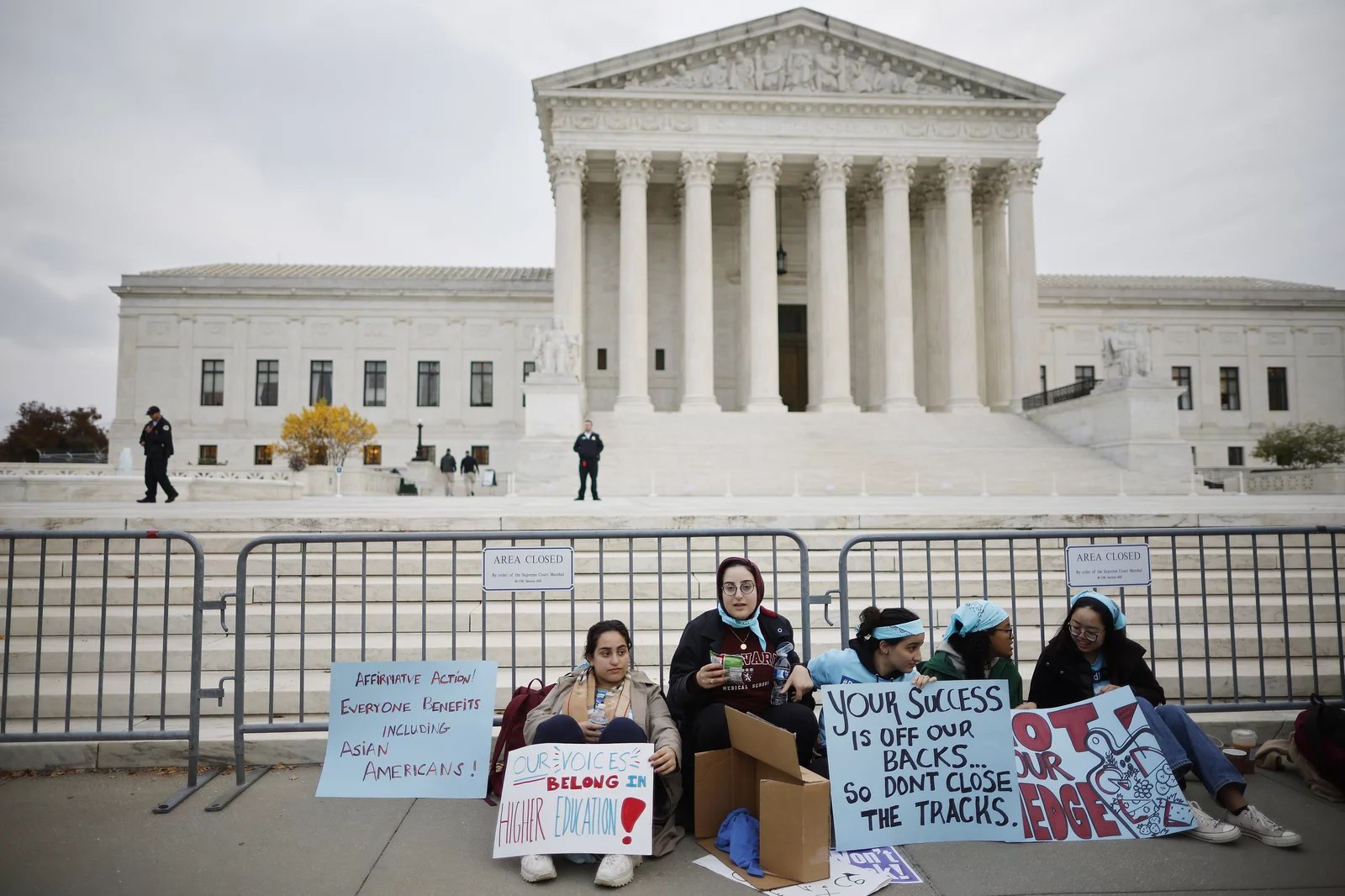A bandaid to achieving equity
By David Xiong ’26
On an intense June day of 2023, two Supreme Court justices viewed the court’s controversial decision to overturn affirmative action in very different ways. “You got to find other ways to improve the [college] selection process, but we haven’t found those ways just yet,” asserted Justice Sonia Sotomayor, who has long been a proponent of the theory that affirmative action goes hand in hand with anti-discrimination protections guaranteed by the Civil Rights Act of 1964. Yet, Justice Clarence Thomas disagreed, “Show me in the Constitution where you get a right to separate citizens based on race.” Both Sotomayor and Thomas’s arguments hold some validity. On the one hand, Sotomayor is right to assert that there is a lack of alternative solutions to dealing with systematic oppression that affirmative action is supposed to mitigate. However, Thomas reasons that affirmative action could potentially be construed as separating citizens into groups on the basis of their race, something that was never the intent of affirmative action. Ultimately, though the Supreme Court’s decision has severely affected students of marginalized groups, affirmative action will never fully achieve its fundamental goal of equality. Thus, we must begin looking for other ways to right the wrongs of systemic racism and oppression in our country.
First, the main problem with the recent ruling to strike affirmative action is the Court’s suggestion to consider race in the college “struggle” essay. In the court’s majority opinion, Chief Justice John Roberts wrote, “…[N]othing in this opinion should be construed as prohibiting universities from considering an applicant’s discussion of how race affected his or her life, be it through discrimination, inspiration, or otherwise.” While Roberts’s message of goodwill may seem a reasonable compromise—allowing colleges to promote diversity by considering marginalized experiences—the expectation of a “struggle essay” on how a candidate’s race affected their life ultimately harms students from disadvantaged backgrounds and creates unpredictability. Disadvantaged students are forced to write about uncomfortable and potentially triggering experiences. Moreover, as Justice Sotomayor says, by rejecting affirmative action, the court is simply “announc[ing] a false promise to save face while elite students can take advantage of this [overruling] and make up or dramatize ‘struggle stories.’” This rather strange idea poses a further threat to the fairness of college admissions: white, elite students attending prep schools may try to emulate the same struggles of children from poor, black urban neighborhoods.
To understand how to fix the broken and confusing system the college admissions world currently lives in, one must learn how affirmative action has diverged from its original intent. In the 1970s, universities implemented affirmative action as an effort to correct historical oppression, such as slavery or the systematic genocide of indigenous peoples, which grew as an offshoot of the Civil Rights era. The irony is that both sides of the affirmative action debate have misinterpreted the policy’s original intent: people cheering on the SCOTUS decision ignore the long history of the country’s oppression in favor of an idealistic, “colorblind” world, while steadfast loyalists to affirmative action overlook how it has transformed into a policy that actually doesn’t necessarily benefit those it intends to. In fact, African-American and Latino students make up about 31% of Ivy League student bodies, according to data from the Common App, but almost 20% of these student bodies are not on financial aid. Even though the empirical data doesn’t tell the whole story and the policy as a whole may be beneficial, the truth is that private institutions need money to sustain themselves. That means less money into financial aid, so inevitably, a portion of the students recruited through race-based affirmative action would be wealthy, even though marginalized groups tend to be on the lower end of the income spectrum.
At the end of the day, affirmative action merely provides an “easy fix” to the larger societal, systemic problem of persisting unequal access to education. According to data collected by the United Negro College fund, only about 57% of African-American students have access to college-preparatory STEM courses, while these numbers lie at 81% and 79% for Asian and white students. Moreover, only 29% of African American and Latino students are enrolled in at least one Advanced Placement (AP) course at their school. While affirmative action may have been created to improve diversity, it makes students question whether they got in on merit or because of their race, all the while providing an opportunity for the rich, white elite to cry “reverse racism.” Ultimately, affirmative action is only a way to remove white guilt over flawed education systems. Evan Mandery, in an opinion column for Politico, sums it up well: “But elite colleges and universities…as drivers of social inequality — made a conscious, self-serving choice to maintain an absolute focus on diversity and inclusion rather than the more difficult topics of race and exclusion.”This, of course, begs the question of what an alternative world without affirmative action should look like, especially in light of the recent SCOTUS decision. While it is not wrong to keep consideration of race in place to a certain extent, we must funnel funding into public schools and support school choice by encouraging charter schools in areas where the system has failed them. Although this proposal may seem idealistic, it will better address the issue of equal opportunity than trying to superficially create equal outcomes in the admissions process. Indeed, if we remain pessimistic about genuinely creating change, change will never happen. Therefore, it’s time to rethink our mindset.



